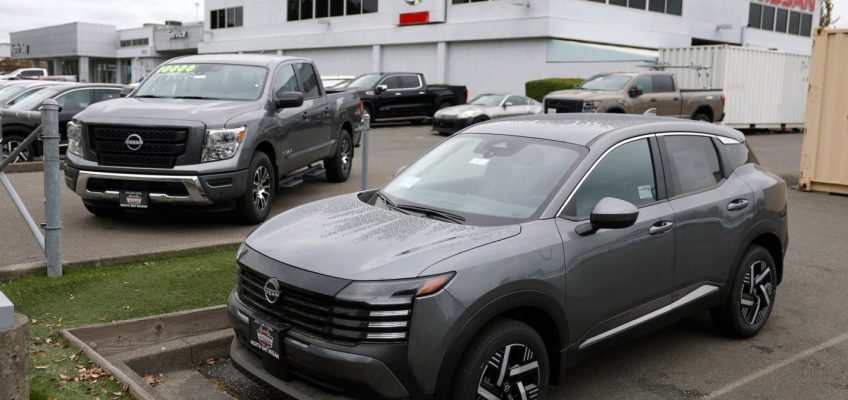More than a dozen whiskey-filled oak barrels sit on racks inside Ironton Distillery’s production facility in Denver. Most of it won’t be ready to drink for a while — it needs to age for two years — but when it is, this whiskey will be bottled and labeled as “American single malt.”
Colorado distillers are raising a toast to this new standard of identity for domestic whiskey, one that formally defines what ingredients can be used and how American single malt should be made. Instituted in December by the federal alcohol regulators, the designation joins vaunted labels like bourbon, rye and Irish Whiskey. This is the first time since 1968 that the Alcohol and Tobacco Tax and Trade Bureau has added a new one.
While U.S. distilleries have been making single malt spirits for a long time, local whiskey producers believe the designation will allow them to better compete with powerhouses like Scotland and Japan. They are also confident that Colorado can take the lead in popularizing American single malt, thanks to the state’s strong beer heritage, which has cultivated a generation of distillers familiar with using its base ingredient, one that is frequently grown here as well.
“Colorado was and is at the forefront of craft beer in the country. We have a lot of people like me, who were brewers, who understand malt and who started distilling and making malt whiskey,” said Craig Engelhorn, co-founder and master distiller at Spirit Hound Distillers in Lyons. “Just like we were pioneers in the ’90s with craft beer, we’re pioneers now with malt whiskey.”
A bottle of Ironton Distillery’s Colorado Straight Single Malt Whiskey at Ironton Distillery in Denver on April 2, 2025. (Photo by Helen H. Richardson/The Denver Post)
Creating a category
The TTB defines American single malt whiskey as a beverage made from 100% malted barley that is mashed, distilled and matured in the U.S.
It must be aged in oak barrels that are a maximum of 700 liters (185 gallons) and bottled at least 40% alcohol by volume. While the spirit is required to be distilled entirely at one distillery, the definition leaves room for companies to either make it in-house or source it from another producer.
The parameters were largely informed by whiskey producers, who spent the nine years lobbying regulators. The movement started in 2016, when Steve Hawley, then working at Seattle’s Westland Distillery, convened with eight other spirit makers at a Binny’s Beverage Depot in Chicago. The group’s objective: To find consensus about what makes American single malt whiskeys distinct.
The meeting took roughly one hour and catalyzed the American Single Malt Whiskey Commission, which took the lead advocating for the code update on behalf of U.S. producers. (The spelling of “whiskey” differs across organizations. (The TTB uses “whisky” in its American single malt definition, but for clarity, The Denver Post will spell the word as “whiskey” in this story.)
Hawley, who serves as president of the commission, submitted a formal petition to regulators shortly after that initial meeting. As the rulemaking process inched forward over the years, the organization worked to “spread the gospel” of American single malt whiskey, rallying distillers, maltsters and liquor stores around its cause. Today, it boasts 113 members.
What galvanized so many producers, Hawley said, was an opportunity to level the playing field between American-made spirits and the world’s most coveted Scotch and Japanese single malts.
“America has been known for bourbon for such a long time, but it’s not the only kind of whiskey that’s being made here,” Hawley said. American single malt “stands toe to toe with Scotch whiskey, Japanese whiskey and whiskey being made all over the world.
“I think what you’ll find with American single malt whiskey is, in a broad sense, a very intentional approach to be distinct — to have our own voice in the world of single malt,” he added, “not just be a copy of Scotch or to replicate what other people are doing.”
Head distiller Laura Walters works at Ironton Distillery in Denver on April 2, 2025. (Photo by Helen H. Richardson/The Denver Post)
Colorado’s role
Malted barley is the primary ingredient used to make beer and the majority of whiskeys, and many local distillers transitioned to the spirits industry after cutting their chops at breweries.
That means local drinkers have access to some of the best single malt whiskeys in the country, said Spirit Hound’s Englehorn, who helped develop the original recipe for Dale’s Pale Ale in the early 2000s while he was a brewer at Oskar Blues.
Spirit Hound sells six different single malts, including one called Colorado Honey, which is finished in barrels used to store local honey. It was awarded the title of American Single Malt Whiskey of the Year at the 2024 London Spirits Competition.
It’s not only the technique that sets Colorado single malt whiskey apart, however. Many craft distillers use locally grown barley, which gives their spirits a sense of place and showcases the Rocky Mountain terroir, said Justin Aden, head blender at Stranahan’s in Denver.
Stranahan’s has been making exclusively single malt whiskey since it was founded in 2004. Every spirit starts with the same base recipe: A 100% malted two-row barley mash that’s fermented off the grain husks, distilled and then aged for at least four years in new American white oak barrels. After that, Aden gets to have some fun concocting various flavors by finishing the spirits in different casks – like those previously used for sherry or rum – and by blending different ages together for complexity.
But what makes Stranhan’s whiskey distinct is the Colorado grains, most of which are grown on the Front Range, Aden said. He expects distilleries in other states to use their own barley in single malt whiskeys as well, in order to highlight local agricultural communities. (That’s why the growth of American single malt whiskey is a potential boon for farmers, Engelhorn said.)
“There’s a whole bunch of varietals of barley that grow in different regions of the country better than others,” Aden said. “That’s a really fun thing for whiskey geeks to discover.”
To commemorate the new federal designation, Stranahan’s will soon debut a new blend called Founder’s Release. The 12-year-old whiskey is one of its oldest and highest-proof expressions, clocking in at 60% alcohol by volume. It’s expected to be available for sale in late spring for $199.99.
Distillery dog Ludo, a golden retriever, lies in the sunshine next to oak barrels with aging whiskey at Ironton Distillery in Denver on April 2, 2025. (Photo by Helen H. Richardson/The Denver Post)
Flavor and creativity
What most excites Ironton head distiller Laura Walters is the opportunity for creativity and innovation. The single malt definition mandates that distillers use 100% malted barley, but it doesn’t specify what kind or how it is roasted, which creates room for experimentation.
For example, her flagship American Straight Malt Whiskey features 60% specialty malts roasted to various levels, drawing out different sugars and flavors. But a recipe Walters developed for Colorado State University athletics featured a different ratio of base malts and specialty malts, which created an entirely new flavor profile.
The freedom to design a mash bill like this, plus the ability to leverage barrels and even elevation, means there’s an almost endless well of flavor combinations to play with. “Everybody talks about terroir in wine, but it’s definitely a thing with whiskey, too,” she said. “Even in our state alone, a barrel that is aged at Denver’s level is going to be totally different than a barrel in Aspen.”
Or even in the Boulder County town of Louisville, where Ironton Distillery is moving its production at some point in the next few years.
So, how will American single malt sell? Hawley said he hopes to see new sections at liquor stores denoting the style to help customers more easily identify it. But one of the best ways to try the local tipples remains bellying up where they’re made.
“Go out there, try new single malts, support local distilleries,” Walters said. “It’s an exciting time.”




